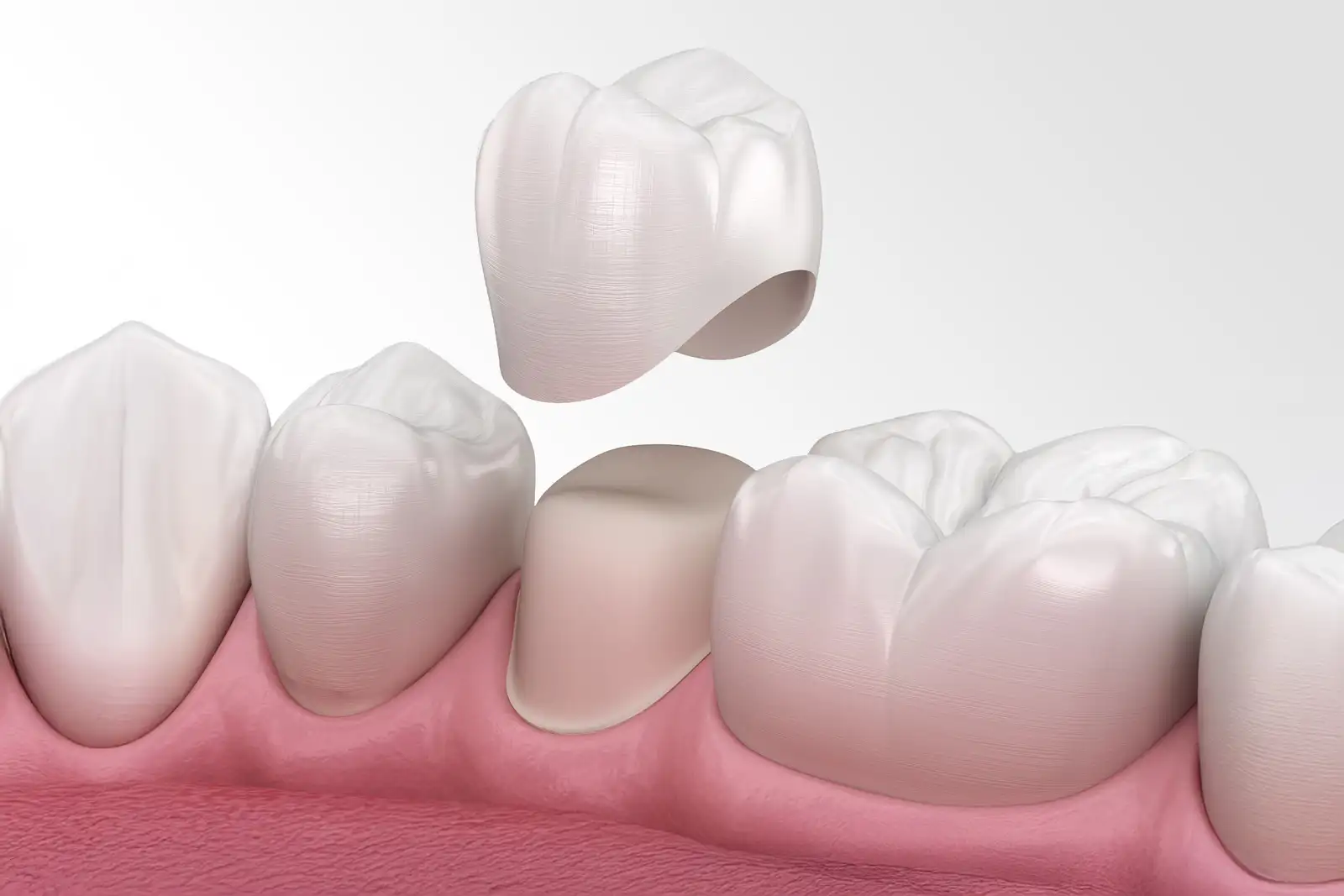Crown on a natural tooth
For individuals looking to restore a broken, worn, or damaged natural tooth, a dental crown fully restores its appearance and function while protecting the healthy part of the tooth from further damage

Precisely crafted and matched in color and shape to the surrounding teeth, a crown on a natural tooth is an effective and long-lasting dental solution.
What is a crown on a natural tooth?
A crown on a natural tooth is a prosthetic solution used to restore a single tooth without affecting adjacent teeth.
The crown is placed over a previously prepared tooth and can be made from a variety of materials, including ceramic, zirconia, or metal-ceramic. These materials differ in aesthetics and structure, and the choice depends on the patient's individual needs and preferences.
A crown protects the compromised tooth from further decay and ensures long-term restoration.
Advantages of a crown on a natural tooth
- Enhances the strength and stability of a damaged tooth
- Provides long-term protection against further decay
- Improves the aesthetics of the smile – natural tooth appearance
- Restores normal chewing and speaking functions
- Can last more than 10–15 years with proper care
Who is a candidate for a crown on a natural tooth?
A crown on a natural tooth is an ideal solution for patients who have:
- A tooth significantly damaged by decay that cannot be restored with a filling
- A broken, worn, or structurally weakened tooth
- A tooth that has undergone root canal treatment (endodontic therapy), making it more fragile
- An aesthetically unsatisfactory tooth (due to discoloration, shape, or size)
Placing a crown protects the natural tooth from further deterioration while restoring function and significantly enhancing the appearance of the smile.
How does the crown placement procedure work?
The placement of a dental crown typically involves several visits to ensure the best aesthetic and functional results.
1. First visit – examination and treatment planning
- Clinical examination of the tooth and oral cavity
- Diagnostic imaging to assess the condition of the root and bone
- Selection of crown material and shade according to the patient’s aesthetic and functional needs
2. Second visit – tooth preparation and temporary crown placement
- The dentist prepares the tooth to create space for the crown; if the tooth is severely damaged, it may be rebuilt using composite material or a metal post
- Precise impressions of the jaw are taken to fabricate a perfectly fitting crown
- A temporary crown is placed to protect the tooth until the permanent crown is ready
3. Third visit – placement of the permanent crown
- The temporary crown is removed and replaced with the permanent one
- The fit, color, and bite are carefully checked
- Once both the dentist and the patient are satisfied, the crown is permanently cemented onto the tooth
A crown on a natural tooth is a durable, reliable, and aesthetically pleasing prosthetic solution for restoring a damaged or weakened tooth.
A precisely made crown protects against further damage, restores tooth function, and mimics the appearance of a natural tooth, allowing patients to chew and speak with ease.
Thanks to modern dental materials, crowns are strong, durable, and resistant to wear. Regular oral hygiene, proper maintenance, and routine dental check-ups are essential for the longevity of the crown, warranty on the prosthetic work, and the preservation of oral health.
Frequently asked questions about crowns on natural teeth
The process usually takes 1 to 2 weeks, including tooth preparation, impression-taking, and permanent crown placement.
No, the procedure is performed under local anesthesia, so the patient does not feel pain during the tooth preparation.
Zirconia and ceramic are popular choices due to their aesthetic qualities and durability, while metal-ceramic crowns are strong and more economical.
Although crowns are highly durable, extreme impacts or excessive force can cause fractures, particularly with ceramic crowns.
With proper oral hygiene and regular dental check-ups, a crown can last 10–15 years or even longer.
Regular brushing, flossing, and dental check-ups are recommended to prevent infections and damage.
Yes, especially if made from ceramic or zirconia, as the color and shape are matched to the natural teeth.
Yes, but it is advisable to avoid extremely hard foods that could potentially damage the crown.
Yes, if the crown becomes damaged or worn, it can be easily replaced with a new one.
The cost varies depending on the material and dental clinic, so it’s best to consult your dentist for an accurate estimate.
Contact us
Our friendly team will be happy to listen to your requests.
